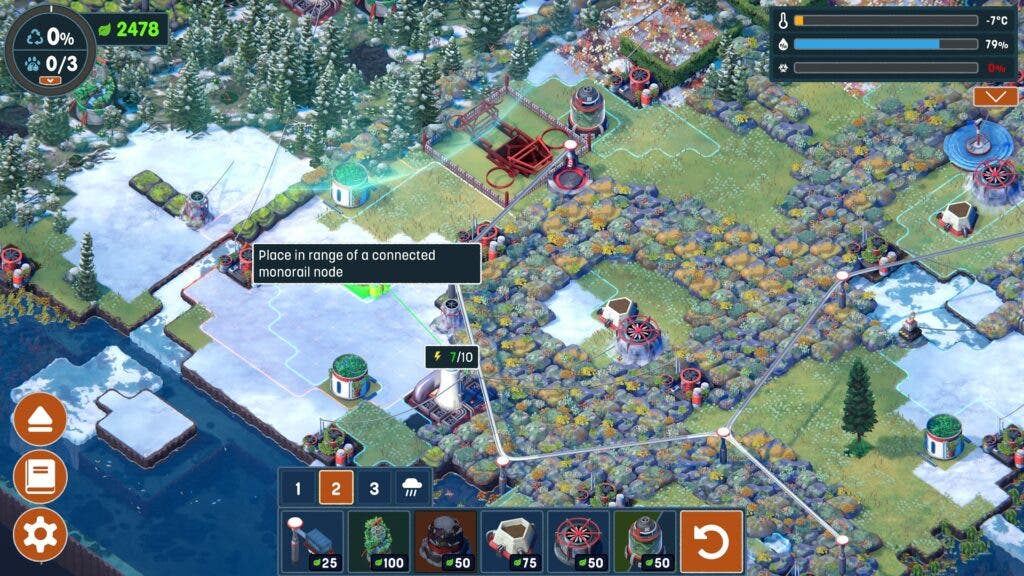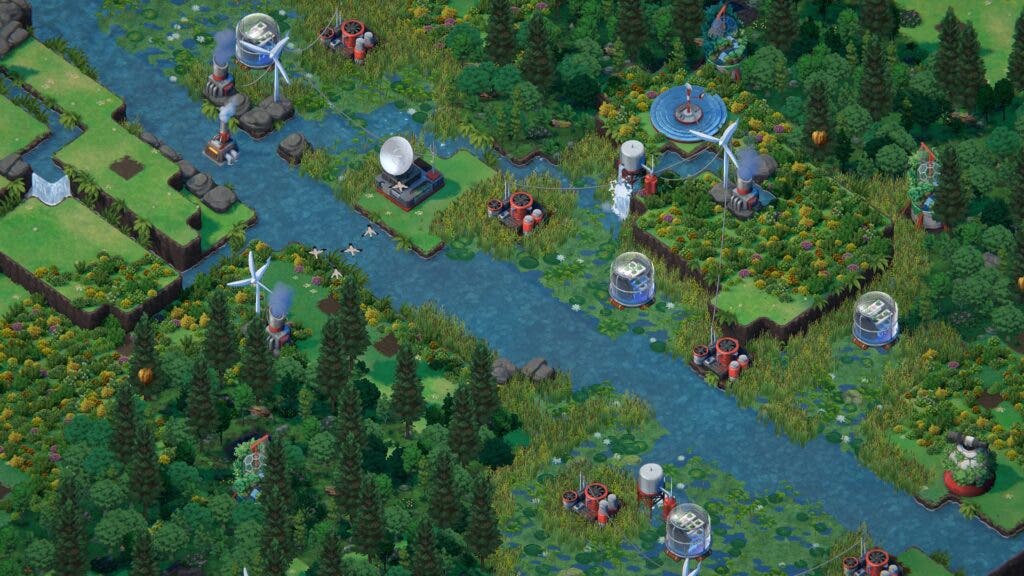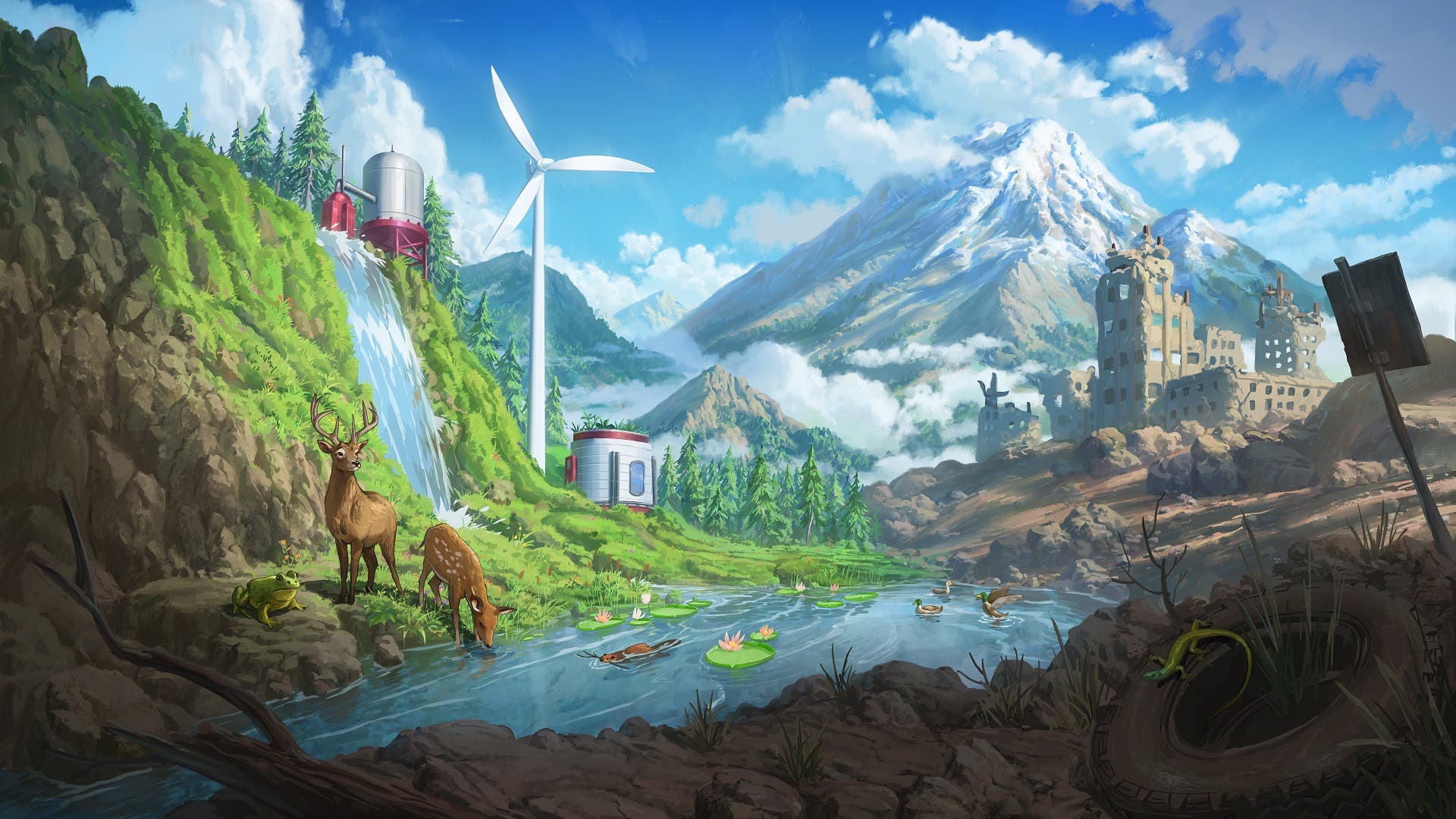We’re all familiar with city builders, right? Simcity, Cities XL, and so on. The goal in this genre is to take a plot of land and build a thriving city. One with roads and houses, businesses to cater to your residents, and eventually become a sprawling metropolis. Terra Nil takes that formula and hits reverse, thanks to the fine folks over at Free Lives, the same developers who brought us games like Broforce. Where your run-of-the-mill city builder tasks you with street planning and laying out electrical lines, Terra Nil asks you to refill rivers and lay out lushing fields of flowers. But how does a game like this hold up? Can the same city-building fun be had in reverse?

Short answer, yes! Terra Nil is quite a joy to play. Terra Nil feels a little more laid back, where meticulous planning is needed for your standard city builder. It’s a game about giving back to nature and making a desolate landscape hospitable to wildlife once again. You’re given the choice of three difficulty options, the more relaxing Gardener, where you just enjoy cleaning and seeing your handiwork. The more strategy-focused Ecologist says it’s all about biodiversity and balance, while the last one, Environmental Engineer, suggests that because of its difficulty, you do not play it on the first playthrough as your starting resources is lower and building costs increase over double. I did not try the last one as I did want to have a relaxing, enjoyable time with Terra Nil.
Once you decide how you want to play, a randomly generated world is created for you. You’ll begin your task of using hi-tech machinery to repair all the damage and destruction caused by those who came before you on this not-Earth planet. You will need various machines to begin terraforming and cleaning to do the task at hand. From regrowing grass to cleaning the oceans, you’ll have access to devices that can repair the world. Like a city builder, you’ll start with very few resources. Each mission begins in a procedurally generated plot of land and asks you to set up an energy grid. Early on, it’s from windmill power, but as you progress, you can unlock the options for alternative power sources like geothermal or hydroelectric. Windmills can only be placed on a calcified rock, so you’ll only have a handful of places to build. Once your energy situation is resolved, you can begin the following terraforming stages. In the first stage, you’ll be cleaning up the surrounding land. Doing this will earn resources, and you’ll need these resources as they form your currency in Terra Nil. But by prepping the land and getting it cleaned up, you are creating a base layer to start the terraforming process.

Be prepared to start building machines, as the ground is considered a wasteland. So to begin the terraforming process, you must build a toxin scrubber to clean the soil; make it fertile to grow the flora. Once that machine does its job and makes the ground fertile, you’ll have to build another machine that will start to regrow the grass. The grass doesn’t choose where to regrow on its own, though; you’ll have to select the layout in which it can. When you cleaned the soil, it created a workable space around where the building was placed. So when you put your grass down, you’re given multiple patterns to choose from, helping you decide on an efficient layout. From L-shapes to long lines, you have a handful of options. But your resources are limited, and you’ll have to balance how many power buildings and toxin scrubbers you can create to save on enough resources for the next stages in the clean-up process.
The next stage asks you to begin rebuilding the ecosystem. You’ll end up planting forests, swampland, coral reefs, etc. These places have requirements for placement; for example, for the swampland, you’ll need to make sure it is close to a body of water like a river. Once you’ve placed these individual biomes, you can reintroduce the animal population to the land. The animals also have specific requirements. For example, some animals must be introduced in green pastures with a particular percentage of that biome available, or you’ll have animals that need similar land but must be around other specific animals for food. It becomes more of a puzzle when you start trying to fit in these biomes and wildlife.

The game will have optional goals to complete to earn more resources during all this work. All these goals involve the stage’s climate, like keeping the humidity at a particular range. Early on, you’ll learn that once you reach a certain threshold of humidity, you bring rain back to the land, which will heal any untreated spaces, so you can save a little on your resources by not having to build so many scrubbers. Although, changing some of the climate may require machines specifically designed for that task. Machines that may burn the land to raise the temperature or machines that will specifically increase the humidity. Typically this creates a choice as you won’t be able to use the other terraforming machines on these land areas, which will challenge you to keep a nice balance going. The challenges add just that little extra bit of difficulty to a run.
Finally, the last thing they ask of you is to clean up after yourself. So once you’ve hit the threshold where you’ve completed all your goals, you have to remove all your buildings and construct a ship to fly you away. Of course, new machines will be built that will basically recycle the other machines, a sort of machine circle of life. Those recycled parts are then sent to your ship, which will need them to get off the ground. It’s a fun step to slowly see your hard work, your nature creation, finally take shape. You get to see all the lush greenery, the beautiful oceans, and all the new wildlife living there now while you leave behind this gorgeous piece of land. The will game slowly pan across your work, showing off Terra Nil’s beautiful artwork. Unlike a city builder, though, there is a finite end here. Once you’ve cleaned up the land, that’s it. You can come back and try to complete all the challenges or incorporate all the animals, but there will be a point where little is left to do. Personally, I find that to be an admirable goal to complete, whereas you may not if you come at this from a city builder aspect, where the goal is to constantly grow.

Terra Nil is a fun game to enjoy at your own pace. For taking a game genre and flipping it on its head, it’s done well and feels like a natural fit in the city builder genre. It’s also quite peaceful and fits the bill of being what most are now casually calling cozy games. The idea of turning these wastelands into paradises is a great one that also instills a sense of pride in your work.
A Steam code was provided in advance by the publisher for review purposes
